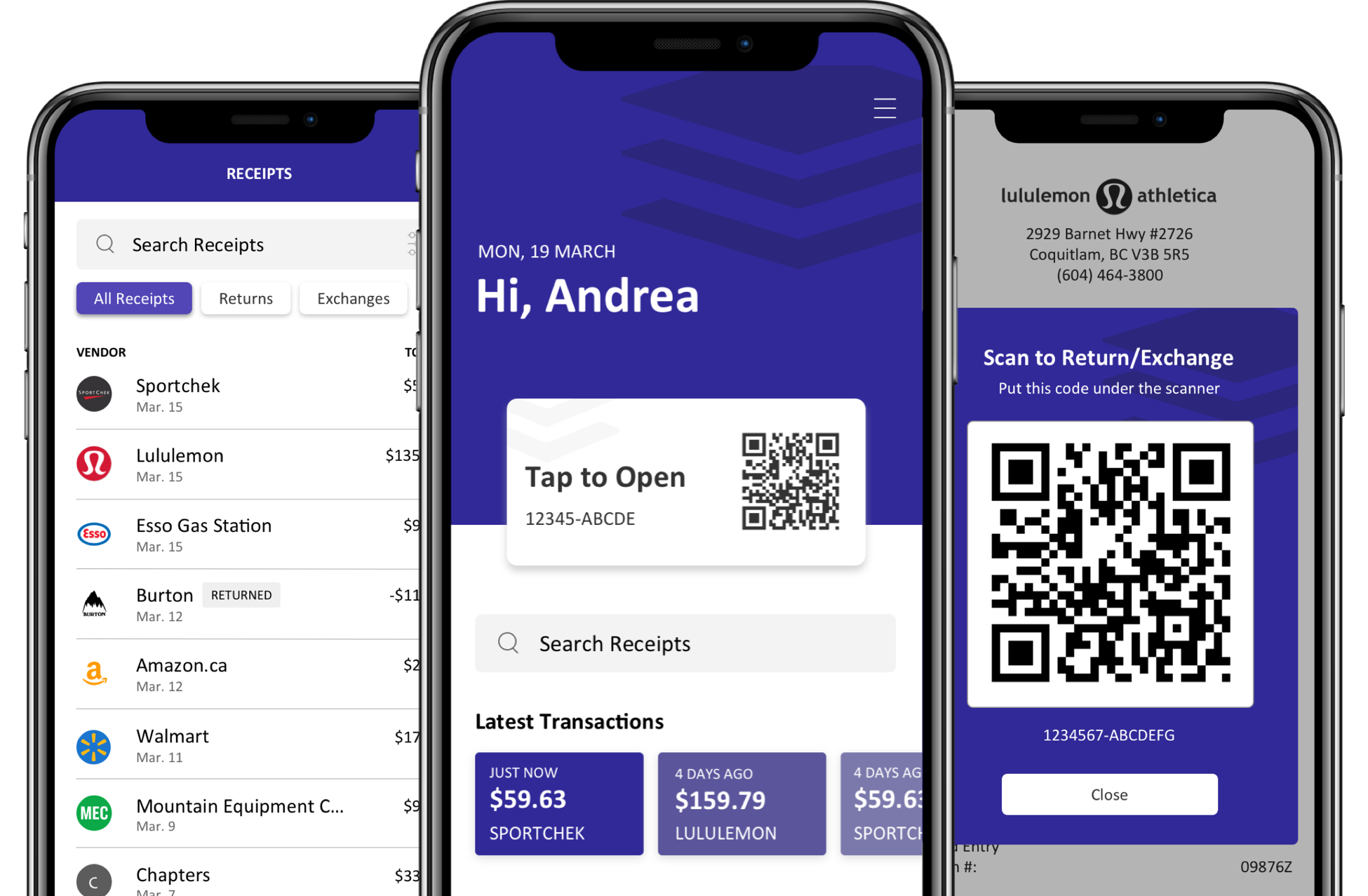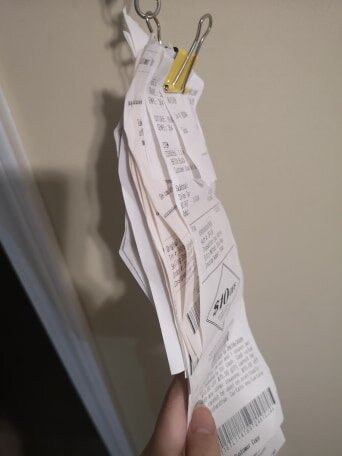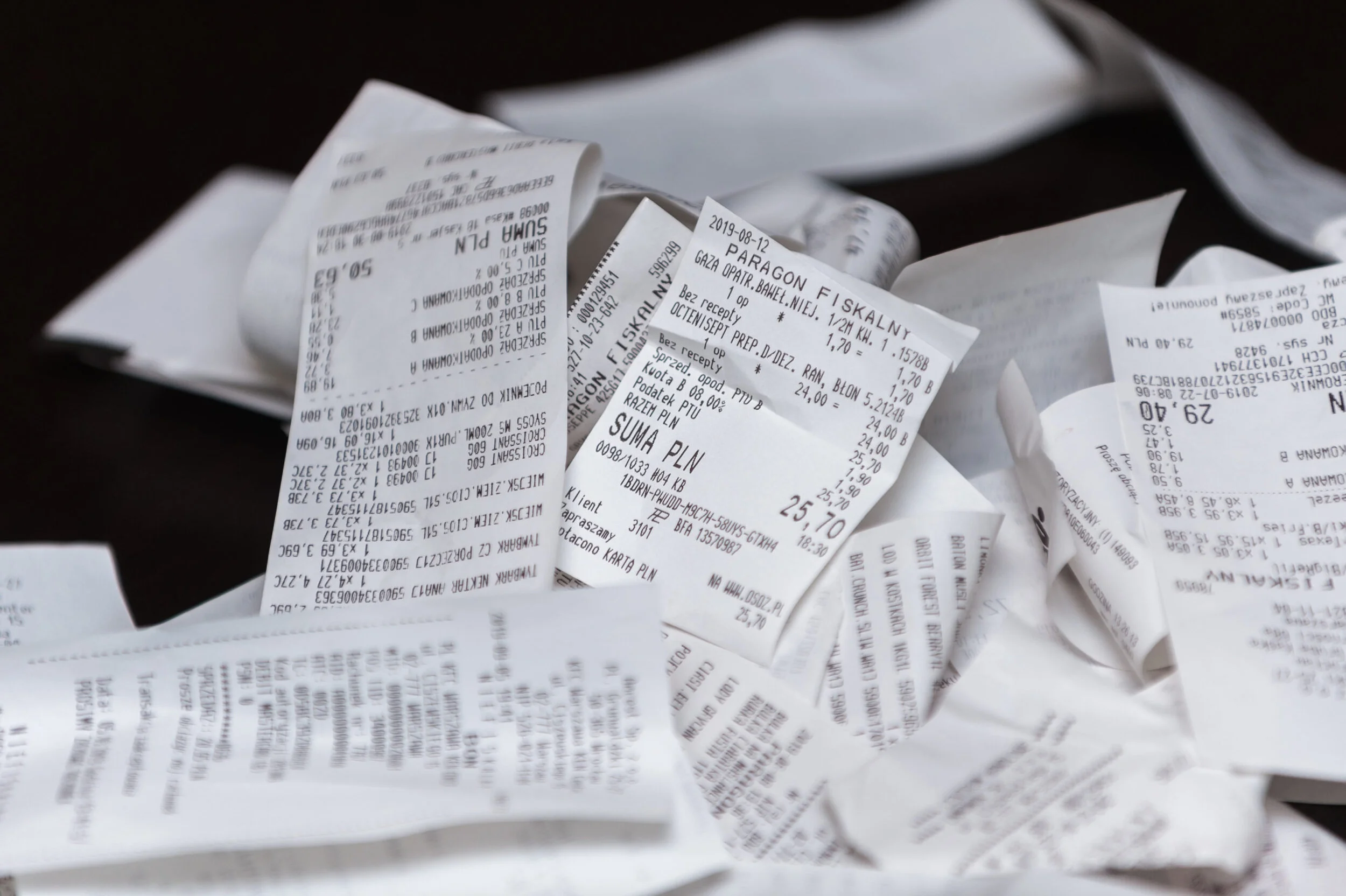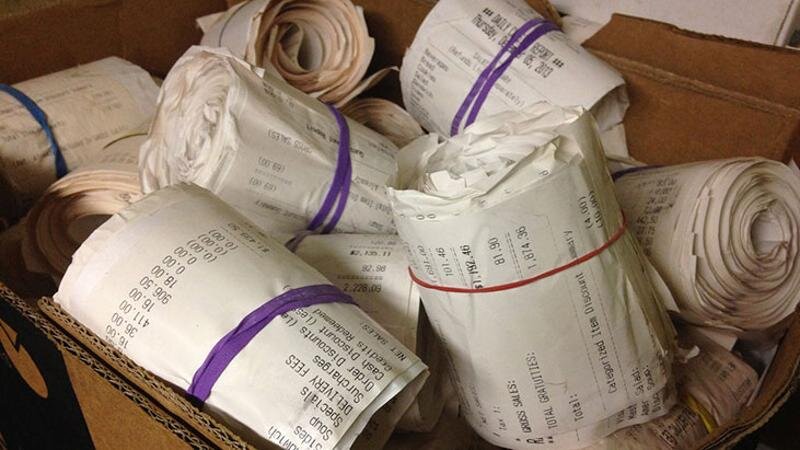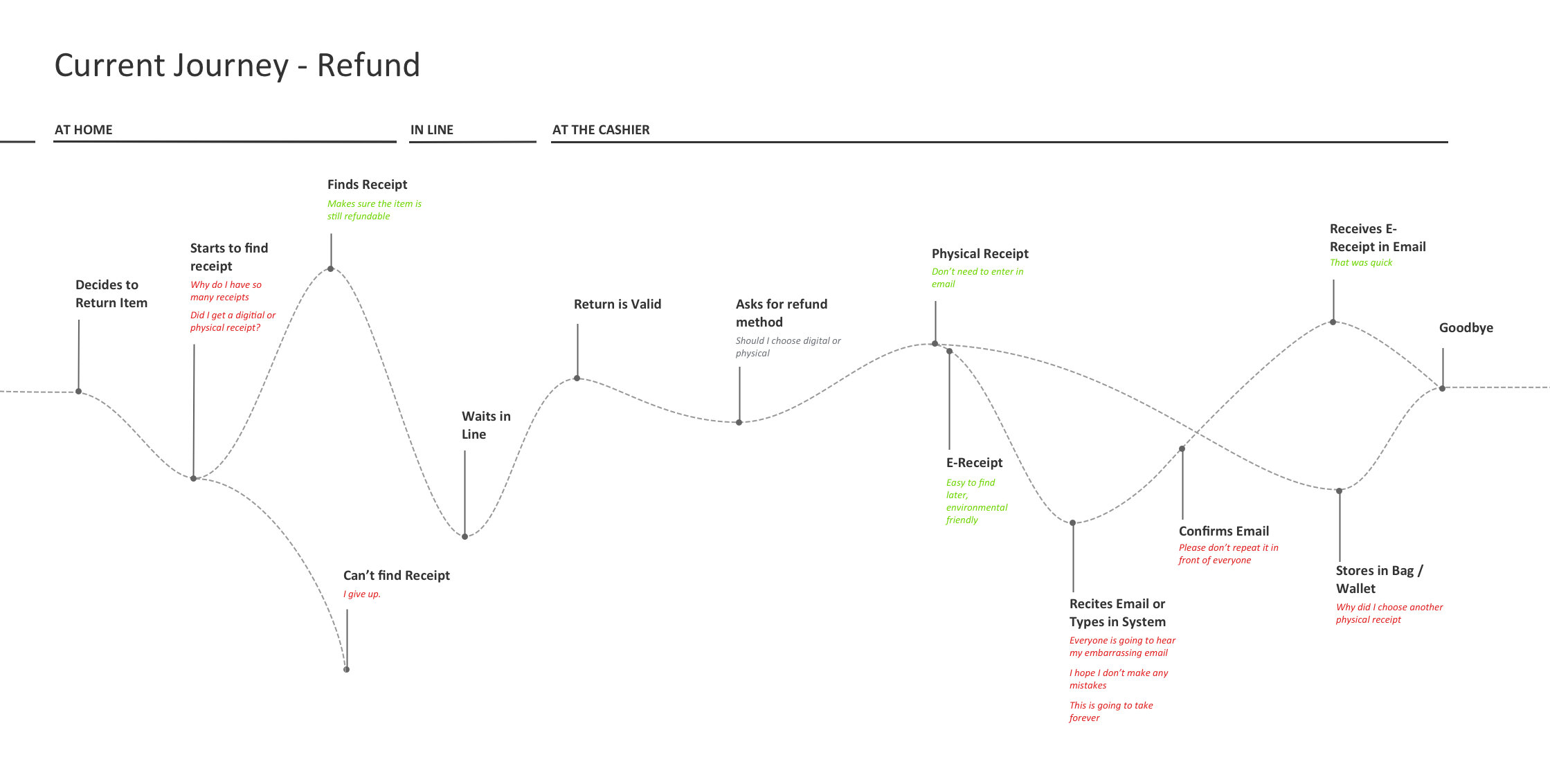Stubhub
Currently, there are many frustrations around physical receipts and e-receipts. Stubhub was created to help consumers quickly store and locate their receipt, while eliminating waste.
Role / UX & UI
Process / Research, Strategy, Design, Testing
“Where is my receipt?”
Problem Statement
The frustration of collecting receipts have grown to be a noticeable cumbersome experience due to the different collection methods. We need a system that will be adopted by all consumers, so that there is a central place to store and access receipts.
Approach
To gather insights on the current purchase and refund experience from customers, with a focus on both short and long term states.
Research Methods
Market Research Analysis
Customer Journey
Customer Interviews
Information Architecture
Site Visits
Prototype Testing
Customer Profiles
Users may fall into one or more of these profiles.
The Fast-Paced
Sometimes I would need to type my email at the counter for them to send the receipt to me, which usually holds up the line.
The fast-paced wants to buy what they need as fast as possible, without slowing the line down.
The Environmentalist
When [the receipts] end up in garbage bins, it contaminates the rest of the waste stream and the chemical can seep into groundwater.
The environmentalist wants to make sure the planet is taken care of and tries to make an impact.
The Organizer
It’s frustrating trying to find a specific receipt cause my receipts are all over the place.
The organizer wants to take control over the receipts that are consistently piling up.
The Privacy Advocate
Everyone is going to hear my email if I share it at the counter.
The privacy advocate wants to ensure no one takes their data.
People were frustrated because they couldn’t find their receipts.
There are three main types to store receipts that were used interchageably:
#1. Physical Receipts
The most common method. Physical receipts are given to the consumer at the point of transaction.
#2. E-Receipts
E-receipts are sent directly to the email inbox of the consumer; method usually selected by the consumer.
#3. Scanner Apps
The least common method. Scanner Apps take a photo of your physical receipt and stores it in an app; also used for managing expenses.
The problem was at the root of purchase.
Consumers don’t know where to find their receipt because they don’t remember how they stored it.
How might I help consumers store their receipts easily?
Scanning Feature
Every one using the app will have a unique QR code, where the cashier will scan the QR code and the receipt will be directly sent to the app.
Satisfies most of the customer profiles: The Fast Paced, The Environmentalist, and The Organizer
Vendor receipt platform and scanner already implemented
Everyone has a mobile phone
Fidelity Evolution
Defining the MVP
Through multiple testing rounds, I was able to fine tune the complexity of the scanning feature and improve minor usability issues. I also decided to mainly focus on receipts from retail stores for the MVP.
Reflection
It was only through heavy external research that I was able to understand the basic requirements of a receipt. Along with user observations, I was able to identify some frustrations that helped me design some key aspects in my app.
I strongly believe that this could be the future of storing receipts as long as vendors and users are open to adapt to this change.
As an extension of the app, I would love to add a payment option improved convenience and aid vendors by adding a marketing feature to promote their products.

